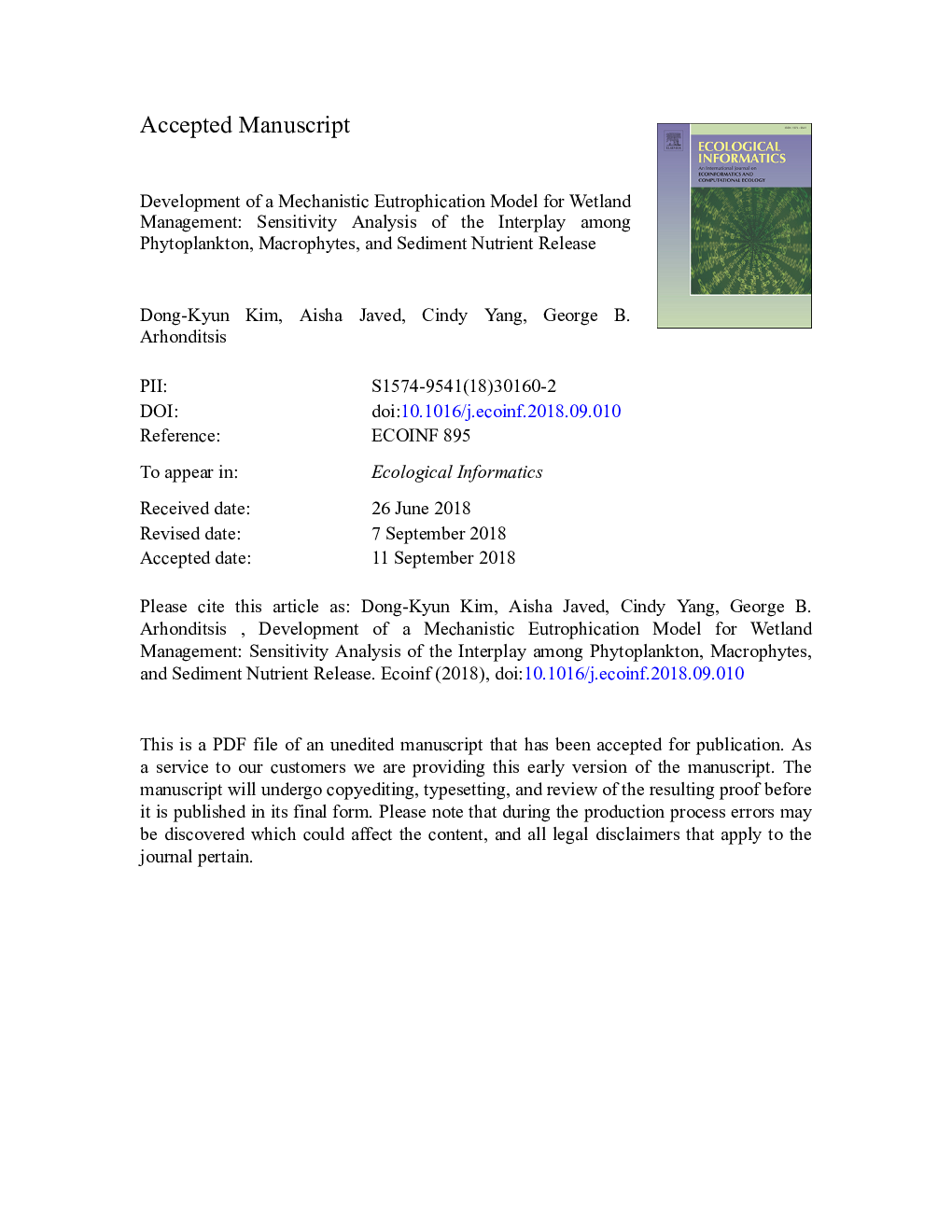| Article ID | Journal | Published Year | Pages | File Type |
|---|---|---|---|---|
| 11033388 | Ecological Informatics | 2018 | 51 Pages |
Abstract
Wetlands are important ecosystems that play a key role in flood control, nutrient sink, shoreline stability, and biodiversity conservation. Considerable attention has been placed globally on the assessment and restoration of degraded wetlands. Of particular concern is the Cootes Paradise marsh, one of the most degraded Great Lakes wetlands in Southern Ontario, which has experienced a 90% decline in macrophyte coverage over the past 50â¯years. In this study, we present a wetland eutrophication model that explicitly accounts for the ecological interplay among phytoplankton, macrophytes, and nutrient release from the sediments. We first reviewed the pertinent literature to compile the most commonly used macrophyte mathematical formulations and plausible parameter ranges of their major ecophysiological processes, adaptive strategies, and ecosystem functional roles, such as resource (nutrient, light, and oxygen) limitation, refuge effects, and allelopathic interactions. We then used two sensitivity analysis methods: conventional multiple-linear regression and Self-Organizing Maps (SOM) to evaluate the ability of our mechanistic model to capture different facets of the wetland functioning, including a potential non-linear shift from a turbid phytoplankton-dominated to a clear macrophyte-dominated state. Our analysis showed that the residual variability of the linear models varied from 7% to 37%, when ecological parameters are considered in the sensitivity analysis, and thus SOM analysis is more suitable to elucidate complex non-linear patterns and identify model sensitivity. Parameters related to the characterization of sediment processes (sediment porosity and vertical diffusivity) appear to be influential in shaping model predictions for variables of management interest, such as ambient total phosphorus (TP) or chlorophyll α (Chlα) concentrations, and macrophyte abundance. Our study also showed that the ability of submerged macrophytes to exploit the available underwater light is critical in our efforts to predict the outcome of their competition with phytoplankton.
Related Topics
Life Sciences
Agricultural and Biological Sciences
Ecology, Evolution, Behavior and Systematics
Authors
Dong-Kyun Kim, Aisha Javed, Cindy Yang, George B. Arhonditsis,
